Munich is the capital of the state of Bavaria, home to traditional breweries and the annual Oktoberfest. It’s a city full of life and special places, combining old-world charm with modernity. Munich offers a variety of attractions, from historic buildings to world-class museums. Munich is especially appealing due to the famous Oktoberfest. However, the city has much more to offer! Discover Munich with our travel agency!

Table of contents
A Brief History of Munich
The Medieval Origins (1158–1500)
“Where It All Began: The City of Monks”
Imagine traveling back in time to the 12th century when Munich began to take shape around a small Benedictine monastery. Founded in 1158, the city quickly prospered due to its strategic location on an important trade route.

Did you know?
The name “München” comes from the German word for “monks”, a reference to the Benedictine monks who lived in the region. Their presence was so significant that it inspired the city’s coat of arms, which still includes the figure of a monk.
The Bridge over the Isar River and the Salt Route
Munich’s foundation is directly linked to a strategic bridge over the Isar River, built by Duke Henry the Lion. This bridge allowed merchants transporting salt—one of the most valuable commodities of the Middle Ages, known as “white gold”—to cross the region. To pass through the bridge and sell their products at the local market, merchants had to pay tolls, making the city a significant source of revenue for the duke.
Munich became a vital point on the Salt Route, which connected the salt mines of Reichenhall in the Alps to other major trade centers. This commerce was crucial for the city’s economic development and marked the beginning of its importance as a commercial hub in Bavaria.
A Fun Fact about Munich
The oldest document mentioning Munich, the “Augsburger Schied” (1158), records that the duke destroyed a competing bridge belonging to the Bishop of Freising to ensure a monopoly on the trade route. This action led to disputes but also symbolized the official birth of Munich as a city.
The Renaissance and Baroque Era (1500–1800)
“Munich: A Capital of Art and Culture”
Under the rule of the Wittelsbach dynasty (the same family as King Ludwig II, creator of Neuschwanstein Castle), Munich solidified itself as an important center of Renaissance and Baroque art in Europe. Majestic churches, grand palaces, and prestigious art collections made the city a cultural hotspot.
Artistic and Cultural Advancements
Under Duke Albrecht V (1528–1579), Munich became a Renaissance cultural hub. He established the Hofbibliothek (Court Library), one of the most significant collections of the time. The city was also adorned with artwork, such as the renowned Alte Pinakothek (Old Pinakothek), one of the world’s largest collections of Renaissance paintings.
St. Michael’s Church (St. Michael)
Built in 1583, St. Michael’s Church symbolizes the height of Catholic influence during the Counter-Reformation. This impressive Renaissance church is not only the largest north of the Alps but also houses the tomb of historical figures such as Duke William V, one of its main patrons.
Munich in the Counter-Reformation
With the foundation of the Catholic League in 1609, Munich played a crucial role in strengthening Catholicism. The city became a bastion of the Catholic faith in a Europe divided by religious conflicts.

Challenges of the Thirty Years’ War (1618–1648)
During the Thirty Years’ War, Munich suffered occupation by Swedish forces in 1632. Additionally, a devastating plague epidemic in 1634 wiped out a third of the population. Despite these hardships, the city recovered and maintained its political and cultural significance.
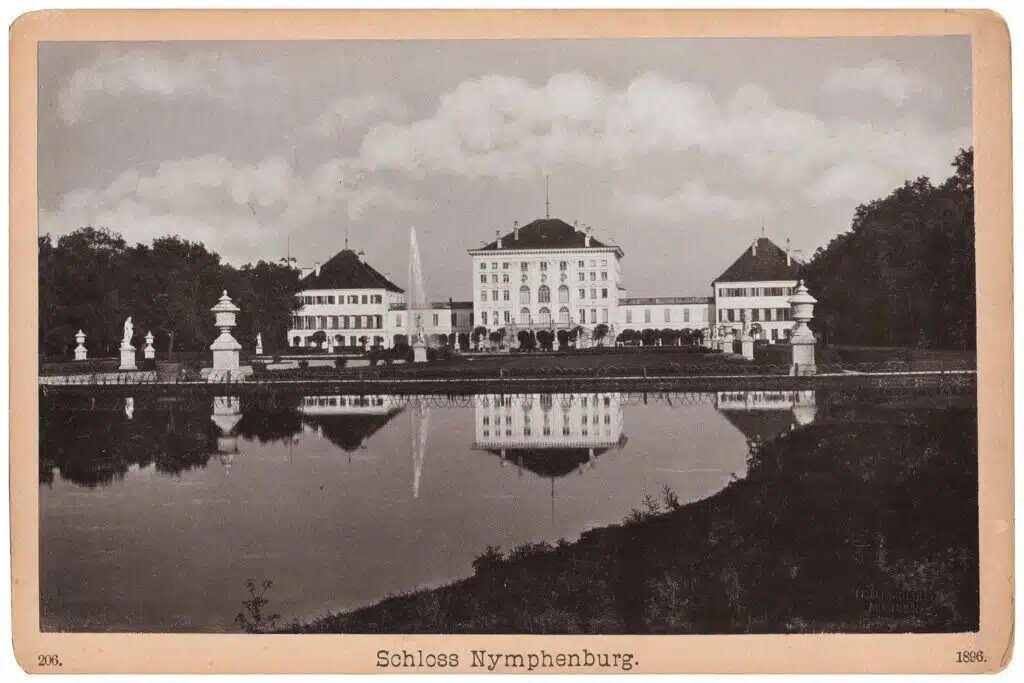
Fun Fact
Baroque palaces like Nymphenburg Palace (Schloss Nymphenburg), built in the late 17th century, were designed as summer residences for the Wittelsbach family. Today, they continue to enchant visitors with their elaborate gardens and exquisite architecture.
The Modern Transformation (1800–1900)
“From Kingdom to a Vibrant Metropolis”
The 19th century marked an era of great changes for Munich, transforming it from a historic town into a cultural and political capital. In 1806, Munich officially became the capital of the newly established Kingdom of Bavaria (Königreich Bayern) under King Maximilian I Joseph (Maximilian I. Joseph).

Growth Under King Ludwig I (Ludwig I)
The reign of King Ludwig I (1825–1848) was a turning point for the city’s architectural and artistic development. Inspired by his passion for art and history, he commissioned the construction of neoclassical monuments such as Königsplatz, designed as an “art district” filled with museums and majestic buildings. He also promoted the establishment of renowned museums like the Glyptothek, dedicated to Greek and Roman sculptures.
The First Oktoberfest (1810)
The first Oktoberfest was held in 1810 as part of the wedding celebrations of Crown Prince Ludwig (later King Ludwig I) and Princess Therese of Saxony-Hildburghausen (Therese von Sachsen-Hildburghausen). Hosted in the fields that now bear the bride’s name, Theresienwiese, the festival was such a success that it became an annual tradition, evolving into the world’s largest folk festival.
Industrialization and Modernization
During the 19th century, Munich underwent rapid industrialization and urban expansion. The opening of the Munich-Augsburg Railway (München-Augsburg Eisenbahn) in 1839 connected the city to other parts of Bavaria, fostering trade and economic growth. The city also became a center of technological and scientific innovation.
Fun Fact
The Maximilianeum, built in 1857, was originally designed as a residence for gifted students and today houses the Bavarian Parliament (Bayerischer Landtag). Its impressive architecture along the Isar River remains one of Munich’s most iconic landmarks.
Another Highlight
The English Garden (Englischer Garten), expanded during the 19th century, became one of the largest urban parks in the world—larger than New York’s Central Park!
Fun Fact
Oktoberfest, originally a wedding celebration, grew so much that it is now the largest festival in the world, attracting millions of visitors every year.

Main Attractions in Munich
Marienplatz
Marienplatz, dating back to the 12th century, has been the center of Munich’s festivities ever since. Located right in the heart of the city, this historic square is known for the Neues Rathaus, the new town hall, which dominates the plaza with its impressive neo-Gothic architecture. One of the main attractions at Marienplatz is the Glockenspiel, a carillon that plays daily at 11 AM, 12 PM, and 5 PM, with mechanical figures reenacting historical Bavarian events.

In addition to the Glockenspiel, Marienplatz is surrounded by shops, cafés, and restaurants. During Christmas, the square transforms into a festive market with stalls selling handmade products, traditional foods, and hot drinks.


Travel with us in Munich and throughout Germany! Our trips are customizable to your taste and full of unique experiences. Discover our services.
Englischer Garten – English Garden
The Englischer Garten is one of the largest urban parks in the world, even bigger than New York’s Central Park, offering a green retreat in the middle of the city. This vast green space is perfect for walking, picnicking, and outdoor activities. One of the most popular areas in the park is the Chinesischer Turm, a Chinese tower that hosts a lively beer garden where you can enjoy a traditional Bavarian beer along with local dishes.
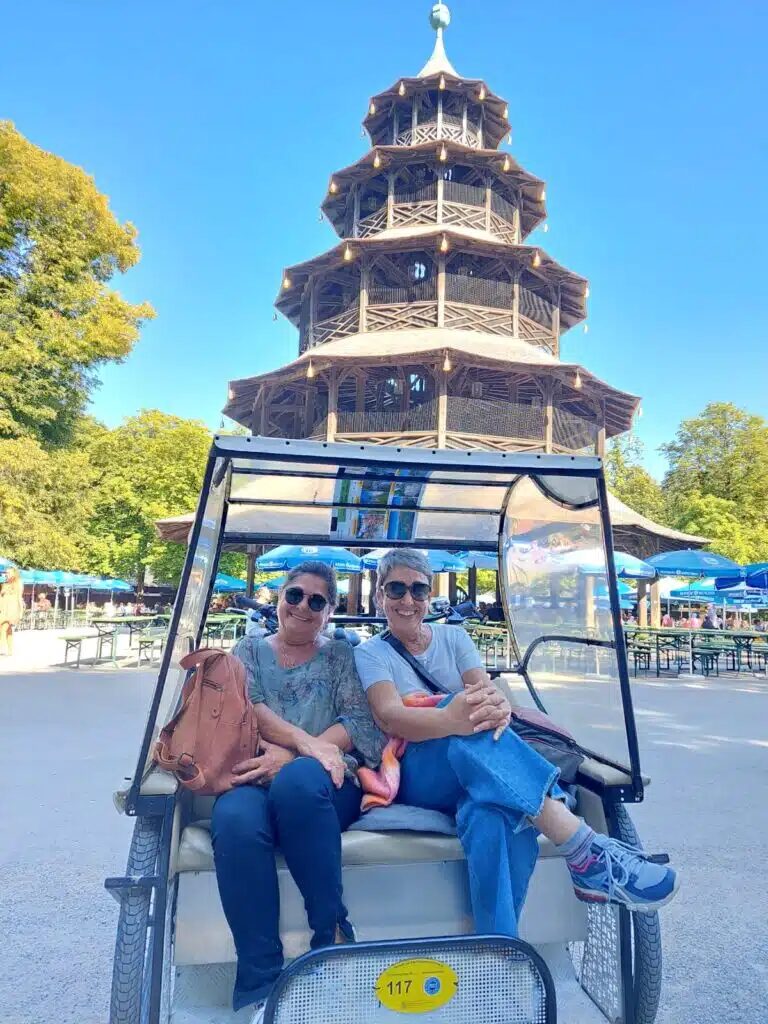
An interesting fact about the Englischer Garten is the Eisbach River, where you can watch surfers riding waves on an artificial river.

Additionally, the Monopteros, a small Greek temple built between 1833 and 1837, offers panoramic views of Munich and the park.

BMW Museum
The BMW Museum in Munich is a must-visit for car and technology enthusiasts. Located near the Olympic Park, the museum showcases the history of BMW, from its earliest models to the latest innovations. The exhibition includes an impressive collection of vintage and modern cars, as well as motorcycles and engines.

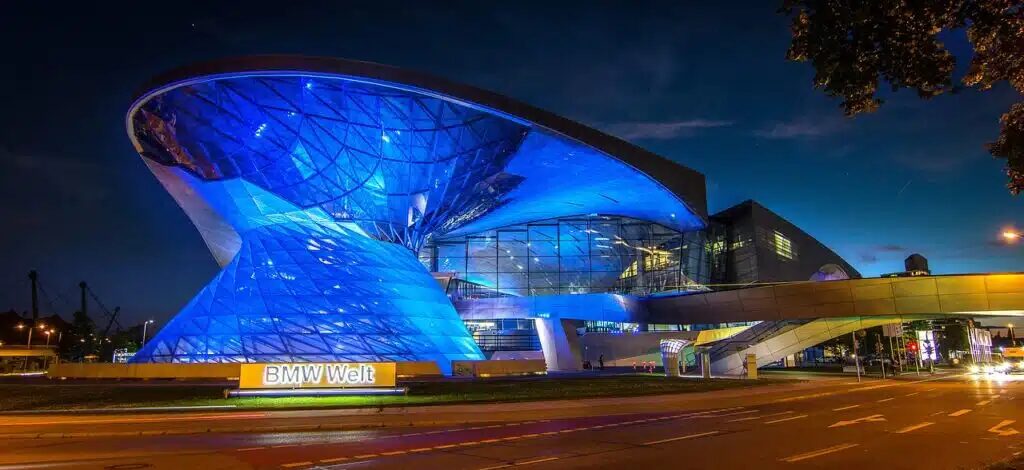

The museum building itself is an architectural marvel, with a futuristic design reflecting BMW’s innovation and technological advancement. Besides the permanent exhibitions, the museum offers guided tours and interactive activities that allow visitors to learn more about the manufacturing process and design concepts of the brand.
Asamkirche
Munich is blessed with beautiful churches, among them the most popular being St. Michael’s Church and the Frauenkirche. All are worth visiting, but if you’re looking for something different, the Asamkirche will surprise you.




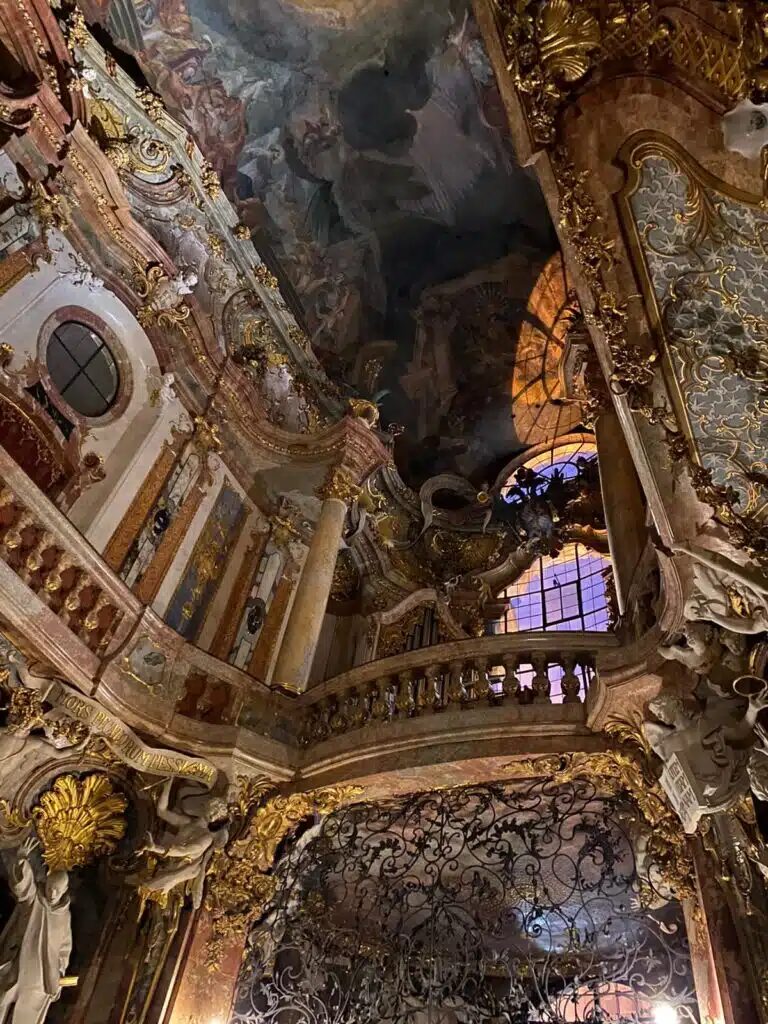
Dedicated to St. John Nepomuk, it was built between 1733 and 1746 by the Asam brothers (hence the name). A gem of the Rococo style, the Asamkirche impresses with its wealth of details and unique atmosphere, with its elongated nave. Like other churches in Munich, this is another masterpiece where travelers can delight in uncovering each detail.
Residenz München – The Palace of the Bavarian Kings
Located in the heart of Munich, Residenz München is one of the most impressive urban palaces in Europe. It served as the official residence of the powerful Wittelsbach dynasty (the same family as Ludwig II, the builder of Neuschwanstein) for over 400 years, reflecting the splendor and sophistication of the monarchs who ruled the region.
A Journey Through Royal History
The complex began as a castle-fortress in the 14th century and was expanded over the centuries into one of the largest palaces in Germany. Its architecture and interior decoration are a blend of Renaissance, Baroque, Rococo, and Neoclassical styles, making each hall unique.
Must-See Highlights of Residenz München
- Antiquarium Hall: One of the largest and best-preserved Renaissance halls in Europe, originally built to display the Wittelsbach family’s antique collection.
- Royal Treasury (Schatzkammer): An extraordinary collection of crown jewels, scepters, crowns, and other precious artifacts belonging to the kings of Bavaria.
- Cuvilliés Theatre: A stunning Rococo-style theater where Mozart premiered his opera Idomeneo.
- Hall of Mirrors: A spectacular gallery adorned with crystal chandeliers and luxurious decor, reflecting the opulence of the Bavarian court.
A Fascinating Fact About Residenz München
During World War II, much of the palace was destroyed by bombings, but its meticulous reconstruction restored all its original splendor. Today, the Residenz houses one of Germany’s most impressive museums, offering an unforgettable journey into Munich’s aristocratic past.
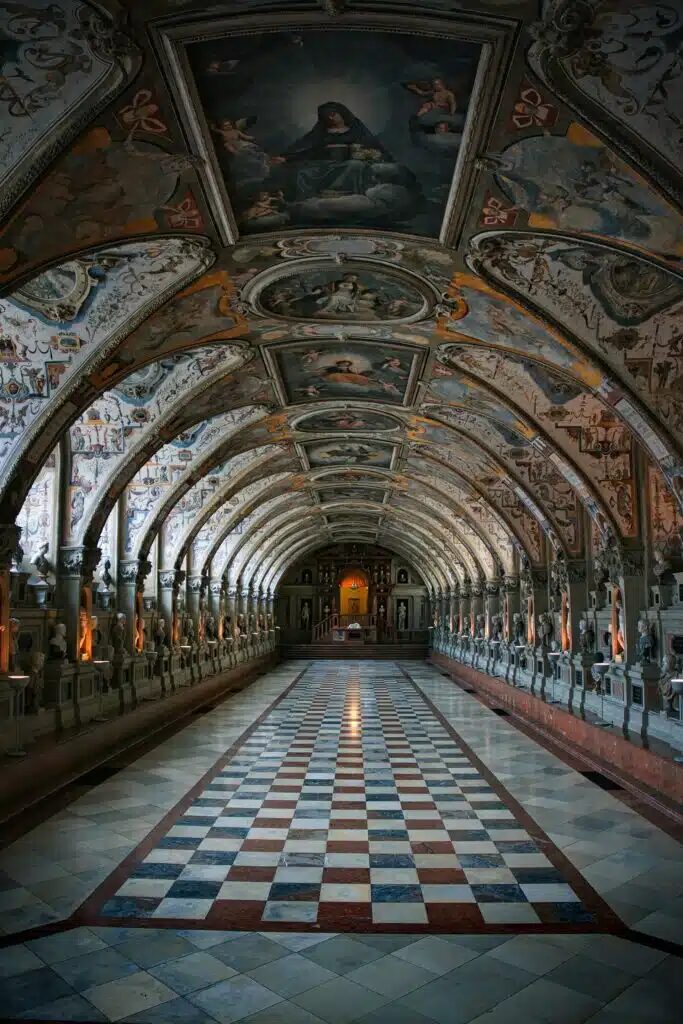
Nymphenburg Palace
Nymphenburg Palace is a magnificent Baroque palace that served as the summer residence of Bavarian rulers. Surrounded by beautiful gardens and canals, the palace offers a fascinating glimpse into the life of Bavarian royalty. Visitors can explore the luxurious rooms of the palace, including the Hall of Mirrors and the Gallery of Beauties.
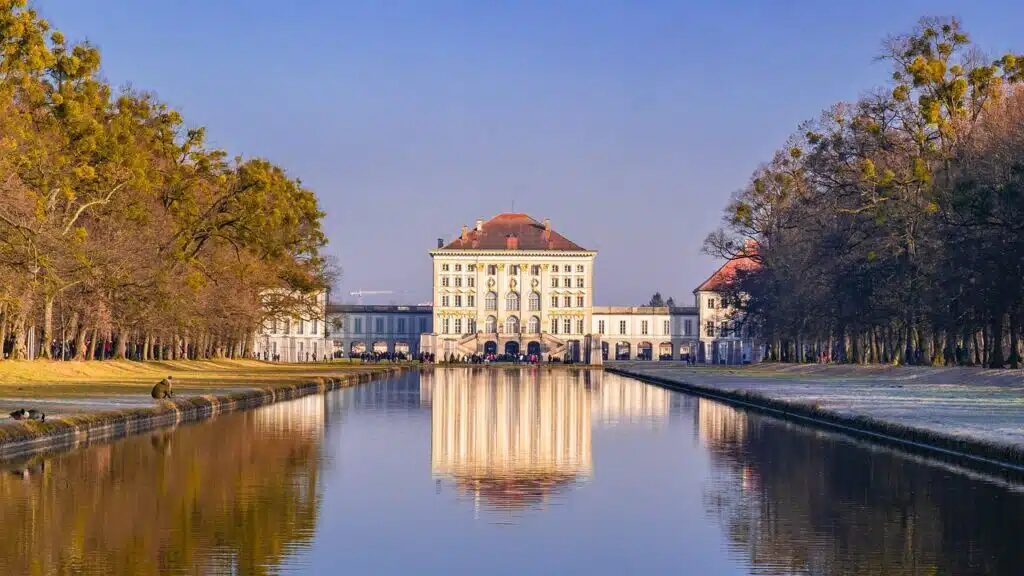
Go beyond regular visits and book a private tour of Nymphenburg Palace in Munich with us! Contact us through the form at the end of the post!
Viktualienmarkt
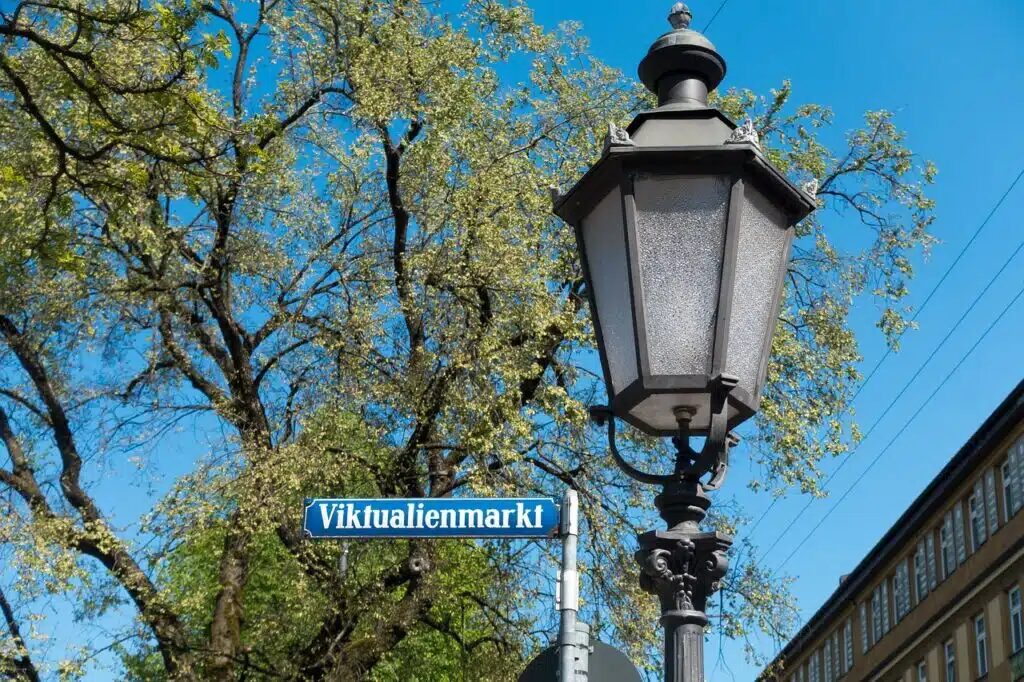
The Viktualienmarkt is an outdoor market offering a variety of fresh products and Bavarian specialties. Located in the center of Munich, near Marienplatz, the market is a great place to sample local foods such as sausages, cheeses, and fresh bread. One curiosity of the Viktualienmarkt is the maypole, a pole decorated with figures representing different Bavarian crafts and traditions.


Allianz Arena
The Allianz Arena is the football stadium of Bayern Munich. Even if you’re not a football fan, you’ve probably heard of this stadium, famous for its facade that changes color depending on the team playing. This ultra-modern stadium is an architectural landmark and an icon of European football. Visitors can take tours of the stadium, visit the Bayern museum, and even watch a game if they’re lucky.
Many travelers with Majestic Germany have visited this beautiful stadium, exploring its exclusive and internal parts. Our itineraries are personalized so you can live your dream in Germany!

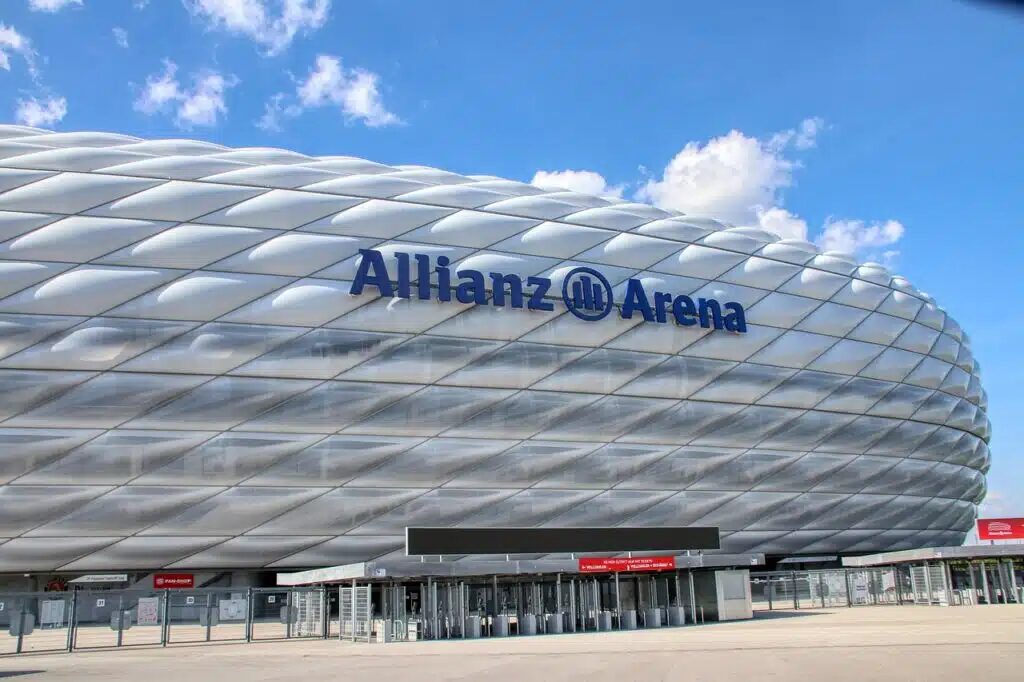
Olympic Stadium
With its unique architecture, the Munich Olympic Stadium is an interesting place to visit, especially for those who love football and architecture! The main stadium was built in 1972 in a crater resulting from bombings during World War II. It hosted the 1974 World Cup and was home to Bayern Munich until 2005, when the Allianz Arena was inaugurated.
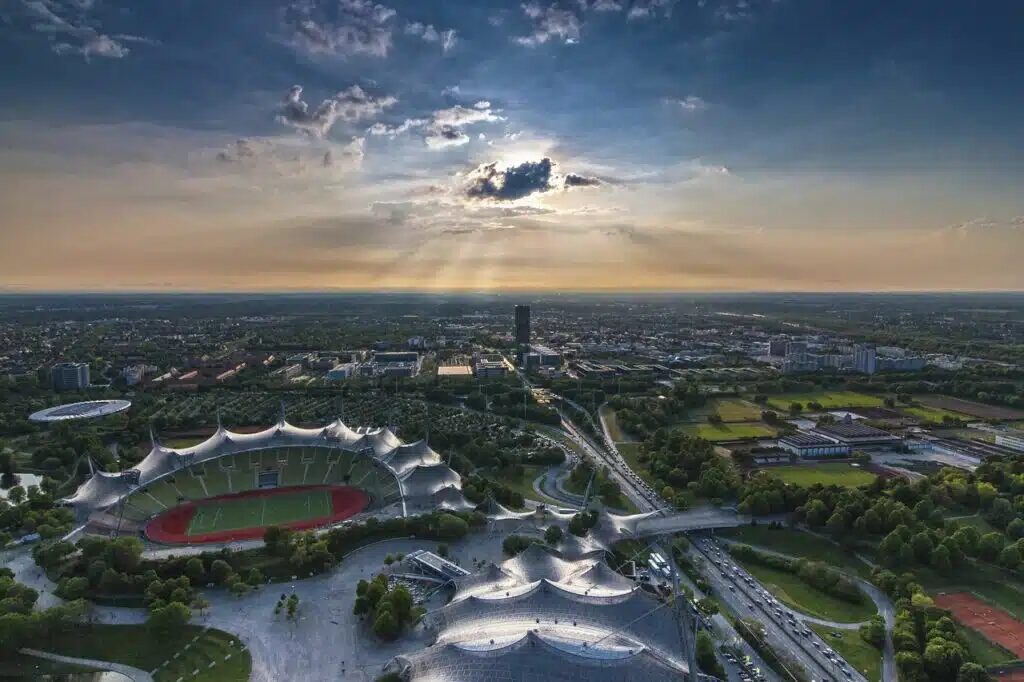
Oktoberfest
Oktoberfest is the largest beer festival in the world, attracting millions of visitors every year. Held in Munich since 1810, Oktoberfest is a celebration of Bavarian culture, with beer tents, live music, parades, and a variety of traditional foods. Participating in the festivities is an unforgettable experience, where you can taste different types of beer and enjoy dishes like pretzels, sausages, and roast chicken while getting a glimpse of German culture.

The history of Oktoberfest began as a celebration of the marriage of Prince Ludwig I and Princess Therese on October 12, 1810, when the citizens of Munich were invited to celebrate the union in Theresienwiese (“Theresa’s Meadow”), the site of today’s Oktoberfest.
Best Time to Visit
This German city is beautiful all year round! The main differences are the temperature and activities. If you want to enjoy Germany’s lakes and swim in them, like in the English Garden, it’s best to visit in summer or spring. In autumn, Oktoberfest is the main attraction, while winter offers the magic of Christmas markets.
Travel with us to Germany
Our goal is to provide a worry-free journey, where travelers feel amazed and in a continuous process of discovery with safety and care. We aim to give each traveler a unique experience according to their dreams and personalize their trip as much as possible, always considering any limitations or special needs.
CONTACT US:

